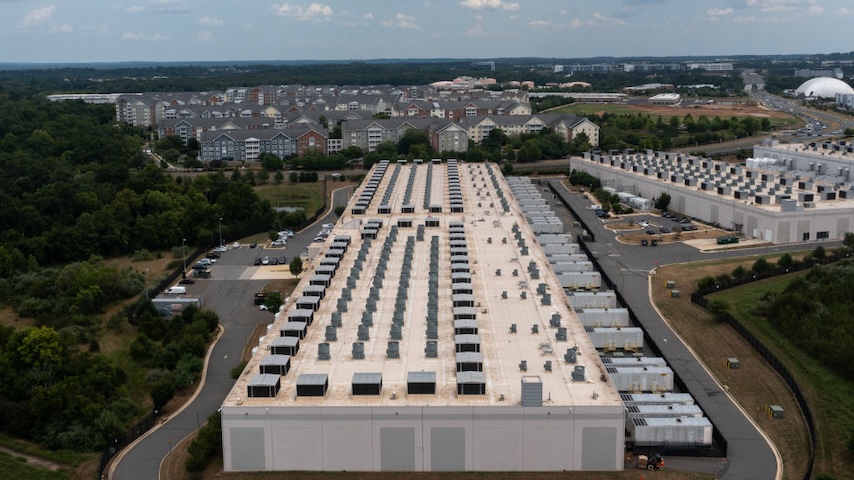Tech Giants Make Splashy Nuclear Power Announcements Long Before The Power — Maybe — Arrives
Photo by Nathan Howard/Getty Images
Last month, we got news that Microsoft was contracting with Constellation Energy to try and bring Three Mile Island’s non-meltdown reactor back online, after its decommissioning in 2019. On Monday, Google announced a deal with Kairos Power to build out small modular nuclear reactors (SMRs), theoretically easier and quicker to build than their behemoth cousins. And then on Wednesday, Amazon joined the fun, announcing a partnership with Dominion Energy, X-Energy, and Energy Northwest on its own set of SMRs.
The upshot of this flurry of nuclear activity is that the tech giants can say they are preparing for the huge increase in power demand from their AI-powering data centers with clean, emissions-free electricity. They can do this, of course, years before any such power starts flowing.
Three Mile Island’s reactor would come online in 2028 at the earliest, and that’s if the re-commissioning process gets Nuclear Regulatory Commission approval. Kairos and Google want to build the first SMR “quickly and safely” by 2030, with additional reactors joining it by 2035. Amazon’s goals seem to center on a buildout through the 2030s.
That’s fine, as far as it goes, except that it is much easier and faster to build a data center or two then it is to build a nuclear reactor. The increased power demand from AI-based searches are already undercutting the tech companies’ climate promises — in July, Google reported their 2023 emissions were 48 percent higher than they were in 2019. That jump for a company supposedly trying to reach net-zero by 2030 is “due to increasing energy demands from the greater intensity of AI compute.”
And the fundamental truism about nuclear power at this point is that it always takes longer than planned to build any of it. Whether its the seven years of delay and $17 billion in overruns to build America’s only full-scale reactor to come online this century, or the start-and-stop process for the supposedly first SMR in Idaho that ended up canceled entirely, none of this works like the announcements say it will.
The announcements are flashy, though, and let the tech companies claim they are offsetting the jump in demand. Energy Secretary Jennifer Granholm spoke at an event with Amazon on Wednesday, and said she was excited about the “bring your own power” movement, a curious concept when, say, Inflation Reduction Act credits are essential to get Three Mile Island back up and running. News outlets grant the companies a strange amount of leeway, like CNBC on Wednesday credulously writing that SMRs “have faster construction times than traditional reactors, allowing them to come online sooner” — it seems tough to say something that has literally never been built in the United States is faster than something else, but sure.
An advanced nuclear power buildout to tamp emissions down in the face of exploding semi-useless AI computing is, of course, a possibility; we do theoretically know how to build these things. It’s just hard, and takes a long, long time, and climate deadlines like 2030 and 2050 are much closer than the people writing corporate announcements would like us think.